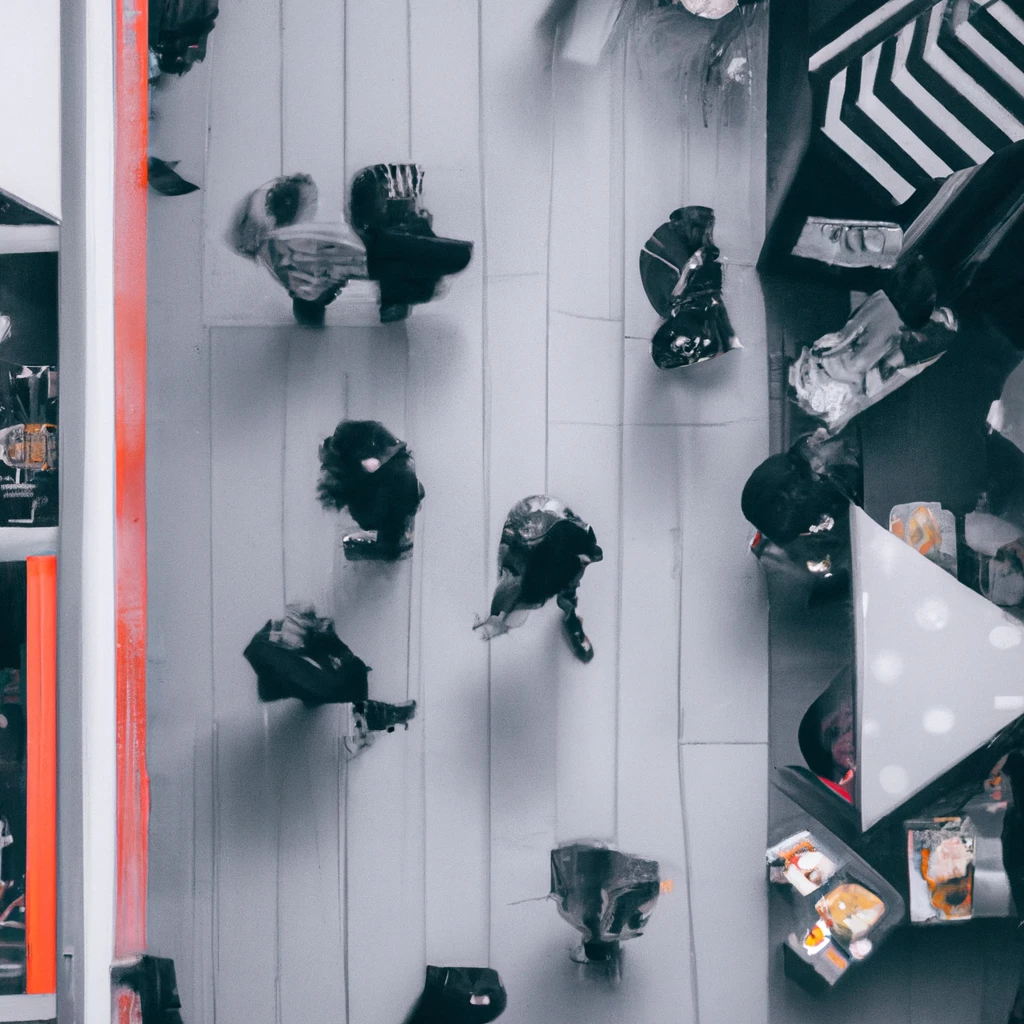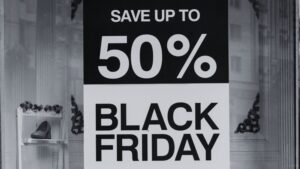As buying behavior changes, retail industry trends are having to evolve at a faster and faster rate. As technology drastically alters the way consumers shop, retailers are finding innovative ways to cater to new demands, as well as inform tastes and trends for the future.
Businesses need to stay on top of what is popular more than ever, as global factors continue to have an effect on everything from supply chain management to the number of people visiting brick and mortar stores.
We’ve put together a list of the top 10 cutting-edge retail trends for 2023, along with some advice on how retailers can ensure they use them to their advantage.
Omnichannel retail remains key
As retail trends evolve, the importance of omnichannel retailing looks unlikely to diminish through 2023. With 73% of consumers using more than one channel to drive the buying journey from research to purchase, retailers must have a strong presence across all channels in order to remain competitive.
It is a matter of course then that having a well-designed website, active social media accounts and overall heightened digital experiences, and a cohesive in-store experience are vital for fostering a seamless journey for the customer. Now though, retailers will also increasingly turn to apps as a way to build brand loyalty and keep customers engaged.
By offering a convenient and easy-to-use app and customer loyalty programs, retailers can provide their customers with a seamless omnichannel experience and make it easier for them to make purchases, access promotions and discounts, and track their orders. The importance of apps to a successful omnichannel approach is by no means lost on retailers, with $6.1 Billion being spent on user acquisition in 2022.
Aside from customer loyalty programs obvious usability benefits for users, apps can also provide retailers with valuable data about a retailer’s customers, including their purchasing habits and preferences. This data can be used to personalize the shopping experience and offer targeted promotions and recommendations, further strengthening the relationship between retailer and customer. Additionally, apps can help retailers to build brand loyalty by offering rewards and loyalty programs, which can encourage customers to continue shopping with the retailer and drive long-term sales.
Find out more about omnichannel retail and the importance of in store here
The increased popularity of buy online, pay in store (BOPIS)
The rise of Buy online pay in store (BOPIS) in retail has been driven by the increasing popularity of e-commerce and the hangover from an era of COVID restrictions that made traditional in store shopping impossible. Major retailers such as Target saw a staggering 500% growth in curb side pick-ups in 2020, and retail chains now view this as a vital part of their operations.
Not only do BOPIS and curb side pick up options provide an easier option for busy retail customers, but this solution also has the added benefit of an increase in foot traffic to stores. Just as contactless payments helping to expedite payments, consumers are looking for pain free collection experiences wherever possible. Brick-and-mortar retail will have to reevaluate retail design in the coming years, with physical stores having to cater for the needs of both BOPIS and traditional layouts. Expect to see dedicated BOPIS pickup areas and the incorporation of technology such as self-checkout kiosks to streamline the pickup process living side by side with more traditional storefront features.
Retail data as a cutting edge
Artificial Intelligence is increasingly becoming the most important weapon in a retailers armory. Leveraging AI backed data insights will become par for the course in every aspect of the industry, from optimizing operations to staying ahead of trends in the retail industry. 76% of retailers already cite data insights as critical to their performance, and this number will only increase in the coming years.
AI backed Foot traffic data, in particular, can provide valuable insights into how customers are interacting with a store and can help retailers make informed decisions about everything from staffing levels to location planning.
By analyzing foot traffic insights through complex AI, data providers can offer retailers with a detailed understanding of their location’s performance, as well as performance on a brand or national level, as well as the ability to benchmark against competitors.
Additionally, foot traffic data can help retailers identify trends in consumer behavior and make decisions about marketing and promotions. Most importantly though, retailers can utilize foot traffic to inform staff and stock levels, helping to minimize waste and maximize profit.
The importance of AI in the retail industry cannot be overstated, and foot traffic data is a particularly valuable resource for retailers looking to optimize their operations and stay ahead of the competition. In the coming years, retailers are expected to rely more and more on the signals provided by data to inform their practices.
Find out more about the power of data in retail here
Continued supply chain issues
Supply chain issues may continue to be a challenge for retailers, and have a significant impact on the retail industry creating lasting economic uncertainty, particularly when they are caused by global events like wars or political conflicts. Russia’s ongoing invasion of Ukraine has disrupted the global supply chain, leading to delays in the delivery of goods, as well as increased costs due to the need to find alternative routes or modes of transportation.
This type of supply chain disruptions and inventory challenges can have a ripple effect throughout the retail industry, leading to lost sales and profitability for retailers. With over 90% of the 600,000 businesses that rely on Russian and Ukrainian supplies being based in the US, changes will have to be made in order to reduce further issues.
In order to mitigate the impact of the current conflict, and any future events similar, retailers must be proactive in their approach to managing their supply chain. Investing in advanced retail technology trends such as supply chain management software and analytics toolscan help retailers to track and predict potential disruptions and take steps to minimize their impact.
By staying up-to-date with the latest retail technology trends and implementing strategies to mitigate inventory challenges, retailers can help to ensure the smooth operation of their business and maintain strong relationships with their customers.
Increased demand for experiential retail
Interactive and immersive shopping experiences are a must for retailers looking to give their customers a complete retail experience. Customer experience remains key, meaning retailers need to be proactive in adapting their strategies to meet the changing needs of their customers.
This includes creating unique in-store experiences that go beyond the traditional retail experience, such as personal shopping services, offering workshops or hosting events. Tie-ins with other brands to celebrate product anniversaries or tips on creating your own accent wall not only drive traffic into stores, but also redefine what a brand represents to a consumer.
With 75% of shoppers still looking to see, touch and try on items before purchase, there is still a strong need for a dedicated in store experience in physical retail, despite the prevalence of Ecommerce. However, retailers could still look to the online world for inspiration for bringing their physical spaces to life.
Consumer retail trends and online shopping trends demonstrate the expectation of strong online presence, including a user-friendly website and active social media accounts. Smart retailers should look to bring elements of their carefully curated online presence into their brick and mortar stores. Interactive displays not only promote personalization and appeal to consumers natural curiosity, but act as a means to collect data on customers, better improving their experience in the future.
The importance of delivery speed and subscriptions
Whilst shoppers are still looking for the perfect in store experience, shopping habits change, and the appeal and ease of home delivery means that it will become an increasingly popular way to shop. However, delivery times are a concern for consumers, with over 90% expecting delivery in 2-3 days, with 30% expecting same day delivery.
With this in mind, efficient and clear communication from retailers is crucial in the delivery process, as it helps to ensure that customers are kept informed about the status of their orders and any potential delays. This can help to build trust and loyalty with customers, as they are more likely to continue shopping with a retailer if they feel that they are being kept in the loop.
In addition, subscription services for frequently used items are likely to become increasingly popular in the future as a way for retailers to build long-term relationships with customers. Leading the charge, online retail giants Amazon’s Subscribe and Save option offers up to 15% savings on everyday items.
By employing a subscription delivery model, retailers can create a sense of convenience for shoppers and make it easier for them to keep track of their regular purchases. As such, subscription services are likely to be a key shopping trend in the coming years, and retailers who are able to effectively implement them will be well-positioned to succeed in the changing retail landscape.
Social media and influencer key retail industry trends
Purchasing directly through social media channels will continue to be a key sales diver in the near future. 93% of active social media users have made a purchase directly through a social media platform, and social commerce is expected to triple by 2025.
With the growing popularity of social media platforms and the rise of the popularity of influencers on consumer purchasing decisions, retailers must be proactive in leveraging these channels to reach and engage with their target audiences.
Social media is a bellwether for shopping trends and lifestyle trends, and retailers would be wise to stay active and involved in order to effectively reach and engage with their customers. This includes having a strong social commerce presence on social media platforms and working with influencers who align with the brand’s values and target audience. By doing so, retailers can effectively reach and influence consumers at key points in the purchasing journey and drive sales through these direct and indirect channels.
Global factors increase need for payment plans
As interest rates continue to rise, consumers are going to be more conscious about their spending. The rise of payment plan providers in the retail industry has been driven by a number of market trends, including the increasing popularity of Ecommerce and the desire of consumers to spread the cost of their purchases over time.
The Buy Now Pay Later (BNPL) market is expected to grow from $141.8 Billion to £596.7 Billion by 2026, and their popularity is understandable. Payment plan providers offer consumers the option to pay for their purchases in installments, allowing for more manageable monthly budgets.
Looking forward, retailers should look to partner with BNPL providers, as more and more shoppers turn to them to help manage their monthly spending. 49% of millennials and 33% of Gen Z are already using a BNPL service, and as rising inflation further tightens purse strings, aligning with one of these services will be a must.
Hyper personalisation, the latest in retail trends
As we touched on previously, data is becoming the most vital component of the sales process, and is only going to get more involved in the future. Data that customers share with retailers with every transaction and website hit can be used to provide a completely personalized shopping experience for the customer.
Retailers are now able to gather and analyze vast amounts of information about their customers, which can be used at every stage of the sales process. Consumer trends point to an expectation of this level of personalization, from personalized name fields in marketing emails to super specialized product recommendations based on past purchases which help elevate customers online experiences.
Trends in retail point to personalization growing in popularity, with 90% of shoppers happy to give personal information online if it meant an easier or more tailored sales process. Shoppers expect a level of data retention from online retailers, so that when they come to make their next purchase the process should be hassle free.
As we move into the future, consumers will expect the online and instore experience to dissolve into each other. Retailers should look to combine advancements in technology and hardware to offer a personalized shopping experience in the physical world.
Find out more about consumer trends here
Consumer demand for sustainability
Sustainability will be much more than a buzz word in 2023. Retailers must demonstrate a willingness to change, through actions rather than commitments to work towards goals. Aside from the obvious benefits to the planet, this has the added effect of aligning their values to those of their customers.
40% of shoppers buy from brands because they approve of the brands sustainable practices, or sustainable products and this number will rise in the future. Practices include modernizing supply chains, sourcing materials responsibly, and supporting local and/or diverse communities.
In order to stay competitive in the retail industry, retailers must be proactive in addressing sustainability concerns and demonstrating their commitment to these issues. This may involve updating their operations to reduce waste and increase sustainability, as well as transparently communicating their sustainability efforts to customers. By doing so, retailers can build trust and loyalty with customers who prioritize sustainability and position themselves as leaders in the retail industry.
To find out how using the power of retail data can keep your business ahead of the game, get in touch





